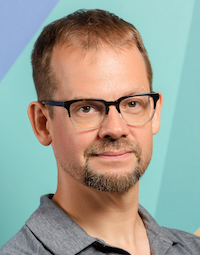
I’m Sam Anthony. I’ve had a circuitous path through technology and the world. This page documents and indexes some of it.

I’m Sam Anthony. I’ve had a circuitous path through technology and the world. This page documents and indexes some of it.
I spent the years from 2016 to 2022 building Perceptive Automata as co-founder and CTO. We built a module for self-driving cars that allowed them to do “theory of mind” tasks, where they were able to reason about what pedestrians were thinking and act on it. We were funded by a mix of west coast VCs and strategic investment from automakers. Our investors included First Round Capital, Toyota AI Ventures, and Hyundai. The technology worked well, but our timing was off (self-driving cars are a long way off yet) and the company wound down operations in 2022.
Before Perceptive Automata I was at the Vision Sciences Lab at Harvard, working on my PhD research. My adviser, Ken Nakayama, is one of the world’s great experts in visual psychophysics. I defended my PhD in 2018. My PhD work was at the heart of the technology we built at Perceptive Automata. You can read our first paper – titled “Perceptual Annotation” – here. Our central insight was that the process of annotating datasets for machine learning is actually a process of measuring human behavior. If you do a better job measuring human behavior, you can train machine learning models that answer questions in a more human-like way, or even that answer questions that have typically been impossible for ML to address.
You can find the full list of my publications and patents here
I originally landed at Harvard to work on the web infrastructure of the site Test My Brain, masterminded by my collaborator Laura Germine. We built a platform for careful online psychophysics that was and is unmatched in terms of rigor and scholarly productivity. I am on the board of the Many Brains Project, the nonprofit stewards of Test My Brain and related efforts.
While I was at Perceptive Automata I appeared on various podcasts, and in various news articles. I was also on the board of the Partners for Autonomous Vehicle Education.
I published a series of articles with my former Harvard lab-mate Julian de Freitas, about the inadequacy of the trolley problem as a safety criterion for autonomous vehicles.
I have a newsletter that covers autonomous cars, transportation policy, the nature of artificial intelligence, and other topics at the intersection of those three.
I started my tech career in the early ’90s – before attending college – working in the very early web.
At the time I was also active with the group Cult of the Dead Cow. Joe Menn’s book is a good introduction to the group. We pioneered the idea of ‘hacktivism’ in its modern sense. We were central to the effort to get Microsoft to take security seriously in an online world. A genocidal dictator used us to try to discredit a witness that was providing evidence of his war crimes. Presidential candidate Beto O’Rourke was a member. It was all a wild and funny moment in time.
In general, my interests lie at the intersection of human behavior and artificial intelligence. The pace of robotics and machine learning development over the past couple of decades has been extraordinary, but the technological sophistication has not been matched by a concomitant sophistication in understanding the available lessons from human behavior. Without absorbing these lessons, it is my strong belief that progress in both autonomous robotics and the broader world of “AI” will hit unexpected asymptotes and suffer unpredictable and unwelcome failure modes. My current goal is to work on projects and with organizations that grasp the importance of these lessons.
A selection of books and papers I have found very influential include
I make music under the name Bell System (hope I don’t get sued, I guess); that’s available here and also I stream on twitch.
I have two accounts on twitter, one professional one that has lain a bit fallow and one for fun. I am more active on mastodon but, again, it’s not really a professional account. I’m suppose I’m not sure if I should link them here, but I bet you can find them.